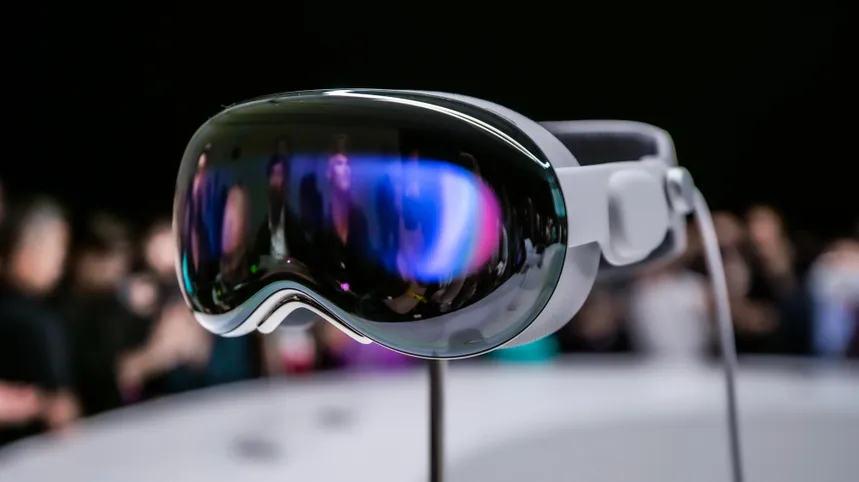Apple began delivering their new Vision Pro product to consumers in the US starting Feb. 2 at a starting price of $3499.
The Apple Vision Pro is a mixed reality headset. With two forward-facing cameras and a LiDAR sensor for eye tracking, the Vision Pro displays its surroundings through dual micro-OLED panels for each eye. This allows the user to control applications just by moving around their head and using hand gestures, giving the user an immersive augmented reality experience.
“I think the biggest selling point of the Vision Pro is being able to interact with apps while being able to look around your surroundings,” Jungwoo Lee (11), tech enthusiast, said. “None of the virtual reality or augmented reality headsets seem to be able to replicate this at the quality Apple does with the Vision Pro, which is really interesting.”
The Vision Pro’s operating system is the newly developed visionOS based on their mobile operating system iOS. Each application opens a window in the user’s view, where the user can control the application using just their hands. Familiar applications such as Safari, Messages, and Photo, as well as connectivity with other Apple devices, is seamless. For example, if the Vision Pro is connected to a Macbook, the user can expand the Macbook screen as big as they want to on the Vision Pro, and control it using their hands.
To power the displays, the Vision Pro is equipped with the M2 processor and a R1 coprocessor to process real-time sensor inputs. Despite the efficient processors, the Vision Pro is advertised to have a battery life of two and a half hours, which may be enough to play just one movie.
The base model Vision Pro includes 256 gigabytes of storage, with upgrade options up to one terabyte. If ordering the Vision Pro online, the website will prompt the user to use an Apple device to measure their head for the head bands. Additionally, the user will be asked if they need optical inserts, generally for people who wear glasses. They are priced at $99 for readers and $149 for prescriptions.
Critics generally agree on a couple of points: One, the Vision Pro has one of the most immersive and sharp screens out of all the virtual reality headsets out on the market, but the slightly limited field of view may be of inconvenience. Two, the Vision Pro is certainly good at displaying its surroundings with the camera, but it’s definitely not perfect. And lastly, there are not a lot of apps that are supported on the Vision Pro, so the experience at the moment is lackluster.
Prospective buyers should also consider that while the technology is new and shows a promising future, at $3499, it may be better to wait for future generations of the Vision Pro to let Apple straighten out some of the current issues.
“Right now, the Vision Pro just seems like another virtual reality headset, just more expensive,” Ryan Jung (12), an interested buyer, said. “However, I think the concept itself is really cool. I look forward to seeing what Apple brings to the table.”


